
Aquariums are beautiful additions to virtually any living arrangement. They can be soothing to watch and can offer a bit of science and lessons in patience, perseverance and understanding, especially for children. Choosing the right aquarium and the fish that go in it does not have to be difficult. Plenty of information is available to help you make informed decisions.
In addition to the actual fish tank, a successful aquarium requires several elements, including a filtration system, lighting, a heater and substrate. This guide covers the basics to help you choose the right components and how to set up your first aquarium.
Choosing an aquarium filter is like choosing a smartphone. There are many brands to choose from. Aquarium filters can be categorized into three types — mechanical, biological and chemical — or a combination of two or three.
Mechanical filters bring aquarium water in and run it through a filter media that captures floating detritus. The water then runs through carbon — usually located in the filter media floss — and is then expelled back into the aquarium. The most popular are the hang-on-the-back (HOB) style mechanical filters that literally hang on the back of the aquarium.
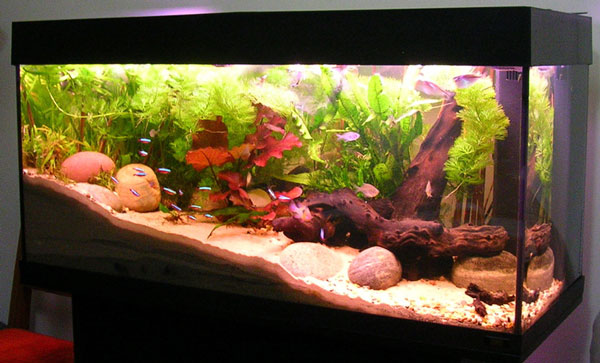
Aquascaped aquarium. Photo by Neale Monks/Wikimedia
Following the HOB is the canister filter, which usually combines filter media with chemical filtration properties and biological filtration in the form of bioactive balls or bioballs, which beneficial bacteria latch onto.
The canister filter is an external filter that is usually located in a cabinet below the aquarium. It has an intake that brings water down into the filter, where the water trickles through the three phases of filtration. The filter then pumps the water up via a hose and back into the aquarium. This type of filtration is capable of filtering large volumes of water, with some capable of filtering more than 400 gallons of water per hour and even more. In my opinion, canister filters are best used in the larger capacity aquariums. They do an excellent job of keeping the water in large aquariums very clean.
Internal filters sit partially or completely submerged in the aquarium and use mechanical and chemical means to filter aquarium water. They use a media insert that includes a filter bag with carbon inside it. These filters are ideal for smaller fish tanks that have small bioloads, or less fish.
The downside to canister filters is the more-involved regular maintenance required. With a hang-on-the-back filter, changing out the filter media usually only involves removing the cover off the top of the filter housing, pulling out the old filter media and dropping in the new filter media. (If your filter has two filter media, change out one at a specified time, not both at the same time, then change out the second filter media during the next maintenance schedule; this preserves any beneficial bacteria that are established on the filter media.) This can be achieved without even shutting the pump off. Internal filters are maintained in the same way as a hang-on-the-back filter.
With a canister filter, you have to shut the system down, remove the top, (usually by screwing the top off) and replace all the media in the media baskets. The upside is that canister filters do a fantastic job in helping you to maintain pristine and super clean water.
My advice? If your aquarium is 80 gallons or smaller, go with the hang-on-the-back filter or internal filter. Smaller fish tanks of 10 gallons or less do especially well using the internal filter. Anything larger than 80 gallons, consider a canister filter. They are more costly, but their results are outstanding.
Some new fishkeepers, in their haste, go home after purchasing their aquarium equipment, fill up the tank with water, start the filter, turn on the heater and add fish. I’ve seen a person new to the hobby purchase all the necessary aquarium hardware and the fish all on the same day without any knowledge with regard to water quality and water conditioning, let alone fish species.
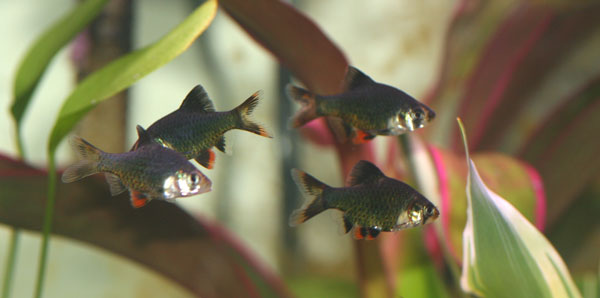
They just set up the tank, turned on the pump and filter, dropped the fish in the tank and hoped for the best. While one of the jobs of the new fishkeeper is to become an informed hobbyist, the people who sell fish should also inform their customers about the importance of cycling a fish tank, and not focus only on making the all-important sale.
What is cycling? Well, you can’t just add water and then immediately add fish to a tank, unless you wish to see stressed, or worse, dead fish within a few hours or a few days. Cycling a fish tank is the process of letting a tank go through a nitrogen cycle, whereby the water goes through a chemical change on its way to becoming ready to support your fish.
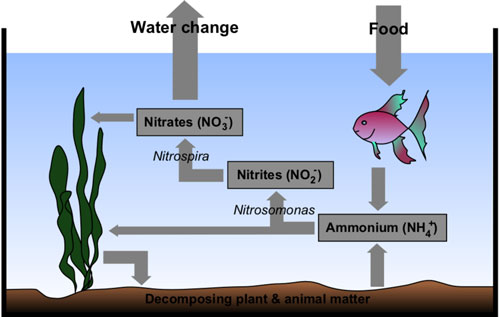
Aquarium nitrogen cycle. Photo by Ilmari Karonen/Wikipedia
An aquarium can be cycled one of several ways: via the various cycling conditioners on the market that are supposed to create an instant cycle, enabling you to add fish within a day or two after adding the water; via the traditional method, which involves adding ammonia in the form of a piece of raw shrimp or some fish food to help cycle the tank; via a few other methods, including using some of a friend’s freshwater aquarium gravel or squeezing the dirty water out of well-used filter media to help add beneficial bacteria to your tank to start the process.
In the traditional method, when the raw shrimp or fish food is added and starts to decay, it releases ammonia, which is harmful to fish. When cycling a tank, its ammonia levels go up and spike, then drop as nitrite-forming bacteria take over the cycling process. The number of nitrites will then spike in your tank as ammonia is converted into nitrate, which is harmless to fish. As the nitrite levels fall, the nitrate levels rise, the end result of which is a cycled tank and you are ready to add your fish.
That is the cycling process in a nutshell. Either way you are going to need to get a test kit or test strips to ensure that the tank has cycled properly. When your tests read 0 ammonia and 0 nitrites for three or four days in a row, your tank is safe to add fish. It is imperative to use a water test kit or test strips to test for pH, ammonia, nitrites and nitrate. Most methods require that your tank should cycle for 10 to 20 days before you add fish.
If your local water district uses chloramines, which are added to drinking water to kill bacteria, you must neutralize the chloramines with a water conditioner that does just that. If you don’t, your fish will experience damaged and burned gills and even death. A chloramine neutralizer gets rid of the chlorine/chloramines or makes it inert and harmless, making the water safe for fish. While some may think bottled water is safe for aquariums right out of the bottle, not all bottled water is treated the same. Some are chlorinated to prevent bacterial growth, so be on the safe side — use a water conditioner to dechlorinate any water you put in your tank.
Tropical fish require certain water temperatures in order to thrive and, unless you live in a warm climate or are keeping coldwater fish like goldfish, aquarium heaters and thermometers are necessary. A range of heaters are available that are designed to fit virtually all sizes of aquariums, from 5-gallon models up to 100-gallon systems and more. They are available as suction-on-the-back models as well as fully submersible models that sit on the substrate or attach to the glass at the bottom of the tank. Some are made of glass, while others are enclosed in polycarbonate for extra protection.
Choosing the right heater and thermometer involves determining how big your tank is, how big your fish are and what you prefer in terms of installation. There are quite a few on the market, ranging from the tried-and-true tube-style glass models that have been around for decades, to the new digital heaters that have built in thermostats and temperature controllers. If you are going to keep larger fish, such as oscars or some of the bigger catfish, go with a heater made of an unbreakable, injection-molded polycarbonate or metal so your fish can’t break it. If you go with smaller fish, a glass heater is fine, though heaters that are made of a polycarbonate material are also ideal.
If you have a 20-gallon aquarium, purchase a heater that is rated for 20 gallons, and so on. Another consideration is the warranty. Most heaters should have a minimum 1-year warranty, while some have 3- and even 5-year warranties. Spend a little more and get a quality heater from a reputable manufacturer.
Aquarium lights for freshwater and saltwater are in transition from fluorescent lights to LEDs. Fluorescent and compact fluorescent lights have remained extremely popular due to their relatively low cost compared to LEDs and are usually the light of choice for all-in-one aquariums, but LED lights are catching on. There are advantages and disadvantages to both.
While fluorescents usually have to be replaced after a year or so due to changes in their color spectrums as they age, LED lights keep their color spectrum a lot longer. They also emit less heat than fluorescent lights and don’t affect water temperatures. High-quality LEDs tend to last longer than lower-quality units. If the LED light fixture isn’t built with user-replaceable LEDs, the entire fixture is tossed when the lights eventually fail. When a fluorescent light burns out, bulb replacement is easy. LEDs consume considerably less energy than fluorescents. Some high-end LED light systems are programmable to include a high-noon setting when the light is at its brightest all the way to a thunderstorm setting that will flash like lightning.
Fluorescent lights usually are built into the aquarium hood or are part of the aquarium hood. LEDs are often separate from the aquarium hood but are becoming integrated into the hoods of some of the smaller all-in-one aquariums.
Gravel performs several functions in an aquarium. It provides a natural look to your tank that helps to mimic your fishes’ habitat. It provides an area for beneficial bacteria to colonize and help to keep your water healthy, and it provides a venue for your live plants to hold and take root.
When picking substrate, choose a type that helps to highlight the look of your fish. While a variety of substrates are available, not all are ideal for all fish. Aquarium gravel is by far the most popular substrate for freshwater fish. It comes in a variety of sizes and shapes and colors, both natural and unnatural in color. It is your decision whether to choose colors like hot pink or fluorescent green, or to use earth tones or neutral colors and have the color in the aquarium come from the fish and not the gravel.
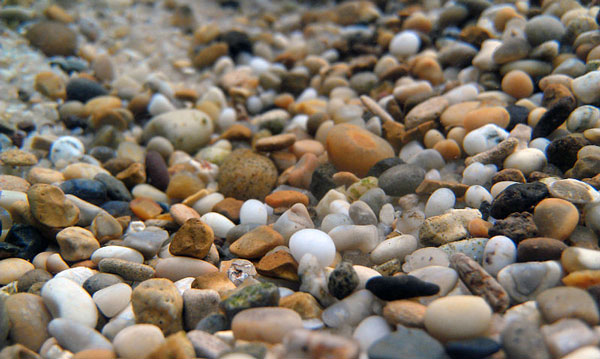
While you might want to choose the larger gravel that is the size of almonds or even bigger, is that the right size for your fish? If you add bottom-dwelling fish like Corydoras catfish (aka Cory cats) into a tank that has large and coarse gravel, your Corydoras will soon lose their barbels, which are important as they use them to find food on the substrate. Ideally, Corydoras should be maintained in a tank with a fine sand substrate. Another negative with larger gravel is that food tends to drop in between the crevices, and if you don’t have a substrate-cleaning fish, such as a kuhli loach that can often get into those nooks and crannies with no harm to it, that food will decay and foul your water over time. Marbles cause similar problems.
You don’t have to add live plants to your tank, but they are more aesthetically pleasing than artificial plants, and they help to keep your water clean by absorbing carbon dioxide and ammonia while producing oxygen. Will the substrate support the growth of live plants? Choose gravel that is pH neutral so it won’t have an adverse effect on your tank water. The gravel manufacturer includes this information on the bag. The general rule is to add 1 to 1.5 pounds of gravel for each gallon of water, so a 10-gallon aquarium would require about 10 to 15 pounds of gravel.
Fill your tank with enough gravel to rise about 2 inches from the bottom. Make sure that you wash the gravel in conditioned water before you place it into the aquarium. Give it a good rinsing in a strainer if possible, and it should be good to go. And when it is time to do a water change, an ideal solution is to clean the gravel and suck up the detritus with a gravel vacuum. This is the best way to do a water change, because you remove dirty water and clean the gravel at the same time.
Your first order of business should be to determine what kind of fish you wish to keep. You have a lot to choose from: catfish, tetras and barbs, and livebearers, such as mollies, platies and guppies and more unique and interesting species. If you see a fish species that you absolutely must have, make that your main display fish, and choose other fish that are compatible with it, as certain species of fish are not compatible with other species.
Read up on your main display fish and get to know its characteristics, if it does well with similar species, what the parameters of your tank need to be (e.g., tank size, pH, filtration, heating, substrate, etc.) in order to keep it healthy, and what other fish would do well with it. Keep in mind that some fish prefer low pH while other fish prefer high pH, so choose your fish accordingly.
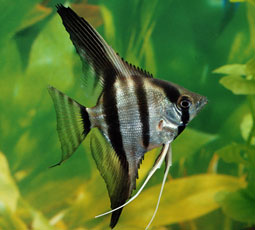
For example, angelfish are one of the most popular fish in the aquarium hobby. They come in several color variations and patterns and, for a cichlid, they are a relatively calm and peaceful fish. They can grow to a large size, so they do well in larger tanks. They are known to eat smaller fish, such as neon tetras and even certain small guppies. Because of their long and flowing fins, the angelfish is often the victim of fin nippers, such as serpae tetras, tiger barbs and other tetras and barbs. So you see it is not always best to just choose fish and place them all together in a tank without first reading up on their behaviors and the requirements to keep them.
Also consider where in the water column your fish is most comfortable. An ideal solution is to choose fish that stay at the bottom of the tank on the substrate, at midwater and at the top. This can serve an aesthetic purpose in that you will be able to observe fish at all levels of the water column, as well as a utilitarian purpose. Bottom-dwellers, for example, will eat any fish food that sinks.
When setting up a new fish tank, don’t rush things, do your research, don’t overstock your fish tank, purchase the best quality components that you can afford, always test the water, create a water change schedule and stick to it, and maintain the filter on a regular basis. And most of all, enjoy your fish.
When you first set up your aquarium, decide where you want the aquarium and stand to go. Ideally, put the aquarium in a place that is away from any direct sunlight or a high- traffic area. Choose a spot that would be relaxing to just watch the fish, yet is still easy enough to maintain the fish tank. When you decide on an area, place the stand and the aquarium there and install the filter and heater, then the gravel. Once these are in the tank, you can add the water that has been dechlorinated and dosed with water conditioner to ensure the water is safe for your tank’s inhabitants.
After you’ve added the water, you can then set up your decor and live or artificial plants. Décor is important because it offers your fish a place to hide. Live plants serve several purposes. They help to purify the tank water, helping to keep the water pristine and clean, and they provide cover for those fish that want it. After cycling, add the fish you chose.
John B. Virata currently keeps an 80-gallon cichlid tank, a 55-gallon saltwater tank, a 29-gallon reef tank and a 2.5-gallon betta tank. He also cares for two dogs, four snakes and two leopard geckos. When he is not caring for all his pets, he enjoys sliding his Model T at San Onofre State Beach in Southern California.
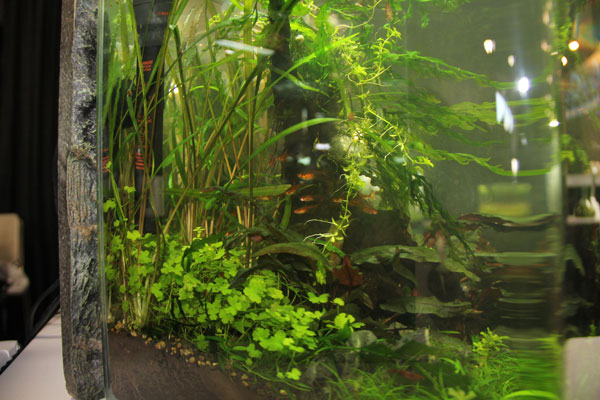 Innovations in the Aquarium Hobby
Fishkeeping has experienced a lot of progress throughout the
Innovations in the Aquarium Hobby
Fishkeeping has experienced a lot of progress throughout the
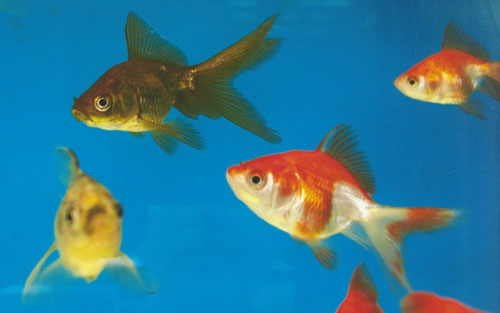 Aquarium Water Chemistry for Goldfish
If you survey a group of aquarists, certainly a large portio
Aquarium Water Chemistry for Goldfish
If you survey a group of aquarists, certainly a large portio
 UV Sterilizers and Freshwater Discus Aquariums
Q. I have a 90-gallon freshwater aquarium that is bare-
UV Sterilizers and Freshwater Discus Aquariums
Q. I have a 90-gallon freshwater aquarium that is bare-
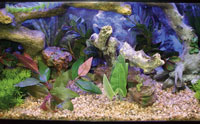 Fish Aquarium Setup Decorations
Few things are as captivating as a beautifully decorated aqu
Fish Aquarium Setup Decorations
Few things are as captivating as a beautifully decorated aqu
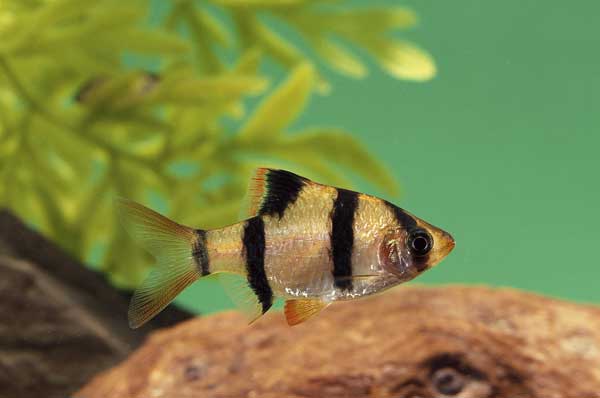 5 Great Freshwater Aquarium Fish
You have your aquarium all set up. The filter has been on fo
5 Great Freshwater Aquarium Fish
You have your aquarium all set up. The filter has been on fo
Copyright © 2005-2016 Pet Information All Rights Reserved
Contact us: www162date@outlook.com